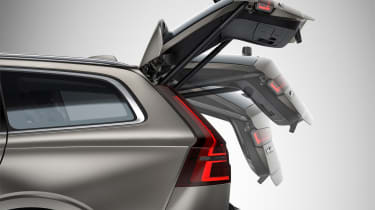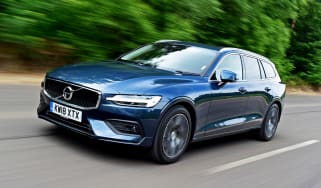Why the estate is still a great company-car choice (sponsored)
SUVs might be flavour of the month, but company car buyers shouldn’t overlook the practical and stylish estate car
The rise and rise of SUVs has taken over the car market in recent years. But there are the early signs that the purity and focus of ‘conventional’ body styles is starting to win back some customers - not least for estate cars.
There are a number of reasons behind this. The first and most obvious one is that if you’re after genuine real-world practicality, you can’t beat an estate. These cars exist for real-world usage, and that translates into the best loadbays that you can buy.
That doesn’t just mean overall capacity, either; estates are generally packed with neat touches, such as easy-to-reach handles to lower the rear seats, tie-down hooks and floor dividers and, on some cars, a folding front passenger seat that allows the really long loads.
The inherent shape of the estate car means a better shape of load area than you’d get in, say, a saloon car - and most manufacturers focus hard on delivering flat floors in estates that make it easy to slide in bulky items. Getting heavy loads into an estate is often more straightforward anyway, because the floor is generally no further off the ground than it would be in a conventional hatch or saloon car.
Fleet buyers and user-choosers are often among the most rational of customers, with a keen eye for everyday usability, practicality, comfort and running costs. And these priorities have persuaded many of them to consider estates.
For fleet customers, there can be appealing cost savings. Estates generally have the same frontal area as a saloon, so they don’t take much of a hit on aerodynamic drag. They’re usually only slightly heavier, too, so there’s not much of an increase in fuel consumption or CO2 emissions - key factors when it comes to VED and benefit-in-kind tax for company car choosers. Many diesel-engined family wagons crack the 120g/km mark on official CO2 emissions and manage close to 60mpg in the real world - backing up the tax savings with everyday frugality.
The design of estate cars has moved on greatly too; in fact, in many cases they’re created at least alongside the saloon or hatchback version of the same car, so the side profile is taken into account from the start. This means there’s no real need to forego image or prestige to get the added practicality of an estate.
Volvo’s V60, for example, includes plenty of the styling cues from its SUV stablemate, the XC60. And across many manufacturers, you don’t have to miss out on in-car technology. You get the same infotainment, the same safety assistance features and the same engines and gearboxes.
From the smallest estates - in effect, slightly more practical versions of family cars, such as the Ford Focus Estate and VW Golf Estate - to more premium ‘executive wagons’ like the Volvo V60 and V90, BMW 3 and 5 Series Touring and Mercedes C and E-Class Estates, there are capacities, sizes, models to suit everyone. Small wonder that while SUVs remain a strong ‘statement’, estates are retaining real appeal too because in many ways, they say just as much about a genuine need to support an active lifestyle.
Recommended
Most Popular

Suzuki’s new 10-year warranty is free – here’s how to get it

Omoda E5 targets rivals: now with zero deposit and APR
Tips & advice

Car dashboard warning lights: what does each symbol mean?

Electric car charging stations: public networks, charger types, apps and maps











